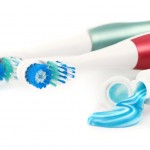
Typically, fixed appliance orthodontic treatment can last 18-24 months. As the presence of orthodontic appliance encourages plaque accumulation the maintenance of good oral hygiene is important is prevent adverse oral health outcomes. The small head sizes of powered toothbrushes are considered to assist effective oral hygiene and have been sown to benefit oral health.
The aim of this review was to compare the utility of powered toothbrushes in plaque control in patients with orthodontic brackets compared with manual tooth brushing.
Methods
Searches were conducted in the Medline/PubMed, the Cochrane Central Register of Clinical Trials (CENTRAL) and the Database of Abstract of Reviews of Effects (DARE) databases. Randomised control trials (RCTs) and prospective clinical studies in adult patients undergoing fixed appliance orthodontic treatment and published in English were considered. Crossover trials were included where a clearly justified washout period was included. The primary outcome was plaque index with bleeding or gingival indices as secondary outcomes. Data extraction was undertaken independently by 2 reviewers with disagreements being resolved by discussion. The Cochrane risk of bias tool was used to assess risk of bias. Direct and mixed treatment comparisons were assessed using a random effects model. The effect estimate for plaque and bleeding scores and pocket depth was standardised mean difference|(SMD) with 95% confidence interval (CI). The GRADE approach was used to assess the certainty of evidence.
Results
- 14 RCTs (10 parallel, 4 cross-over) involving a total of 965 patients were included.
- Follow up periods ranged from 2-16 weeks.
- None of the studies were considered to be at low risk of bias, 10 were at high risk of bias and 4 at unclear risk.
- Meta-analyses showed statistically significant higher plaque scores, bleeding scores and pocket depth values were seen with manual brushes.
| No. of studies | SMD (95%CIs) | |
| Plaque scores | 14 | -0.80 (-1.37 to -023) |
| Bleeding scores | 13 | -0.79 (-1.35 to -022) |
| Pocket depth | 2 | -0.20 (-0.26 to -014) |
- The evidence was considered to be of moderate certainty for plaque and bleeding scores and low or very low for other outcomes.
Conclusions
The authors concluded: –
Powered toothbrushes are a promising alternative for plaque control in patients with fixed orthodontic brackets. Stronger evidence can be established with addition of long-term clinical trials based on the recommendations.
Comments
We looked at another review on this topic recently (Dental Elf – 4th Nov 2020). This review by Sivaramakrishnan et al has included more studies (14) than the earlier review which included 7 RCTs. The earlier review excluded cross-over and spilt mouth studies as they do not represent ‘everyday use, ’ this exclusion is in line with the decision of the Cochrane Oral Health Group for their broader review of powered toothbrush use (Dental Elf – 18th Jan 2014). The earlier review also excluded studies of 4 weeks or longer which excludes one of the studies included in this new review meaning that only 5 RCTs are common to both reviews.
While the findings of both this and the earlier review suggest statistically significant benefits in favour of powered toothbrushes the benefits are small, short term and may not be clinically significant. Consequently, additional well conducted studies of longer duration that include patient reported outcomes would be helpful.
Links
Primary Paper
Sivaramakrishnan G, Alsobaiei M, Sridharan K. Powered toothbrushes for plaque control in fixed orthodontic patients: a network meta-analysis. Aust Dent J. 2020 Oct 8. doi: 10.1111/adj.12798. Epub ahead of print. PMID: 33029794.
Other references
Dental Elf – 4th Nov 2020
Powered toothbrushes for patients undergoing fixed orthodontic appliance treatment?
Dental Elf – 18th Jan 2014
Powered toothbrushes reduced plaque and gingivitis more than manual toothbrushes
